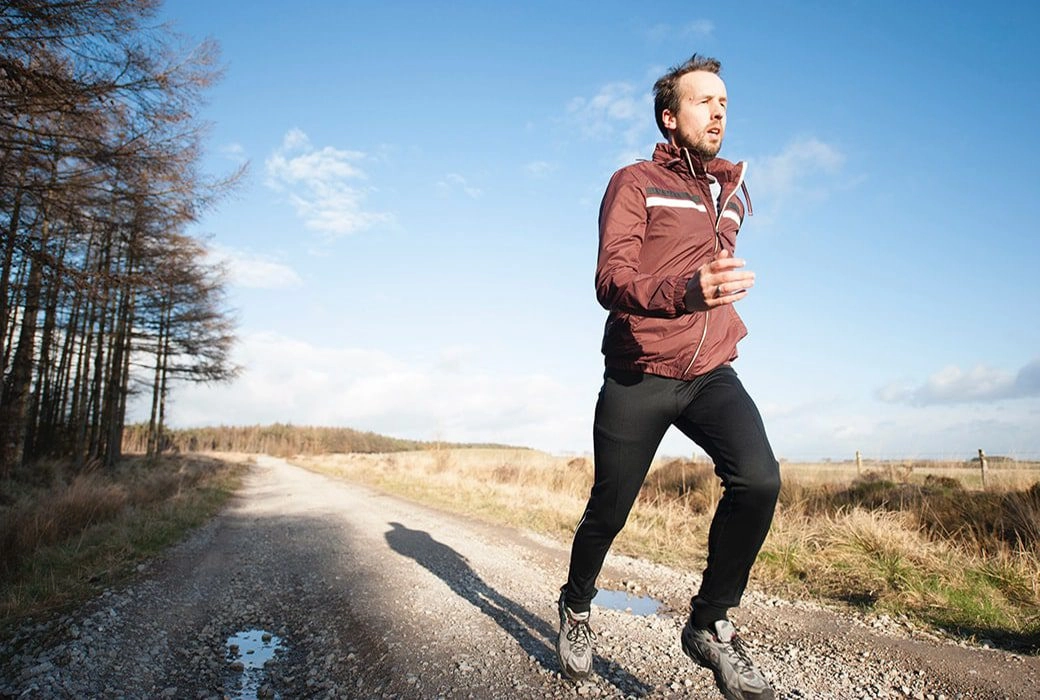Unfortunately, back pain happens to all of us at some point in our lives. Whatever the cause, it’s uncomfortable, even painful, and can hold you back from doing the things you love most. For runners, back pain can be even more acute, because it can keep them from doing their usual running routine, out of an important race, or maybe even stop them from ever running again.
High-impact aerobic sports, especially running, can lend themselves to injury from time to time. The shock factor of the impact of your feet on the ground can negatively impact your body in many different ways – especially your spine. This is why it’s imperative for runners to have proper form when they run in order to prevent back pain and protect your back from injury as you’re running. Read on for some tips on running correctly, some ways you can avoid back pain while exercising, and some information on how running can negatively impact your spine, or strengthen it if you play your cards right!
Top Chiropractor in Anchorage on How To Run Correctly, Without Hurting Your Back
Before we get into proper form for running in order to prevent back injury, it’s important to note that everyone’s body mechanics are completely different. They are determined by your strength, flexibility, muscle density, the way your body is built, and more unique factors that don’t affect everyone in the same way. This means that most people’s stride and gait is different, and there’s not any one “right” stride, necessarily.
However, there is such a thing as universal proper form, which will make running easier for you, and more effective for your body. Again, do what feels good for your body, but keep these tips in mind when you’re thinking about making your running form more effective.
Lower Back
First of all, to protect your spine and prevent lower back pain when you run, you’ll want to think about your core and your hips. Most of the power in your body comes from your core – the group of abdominal muscles around the trunk of your body, both front, back, and sides. While running, you should keep your core as tight as possible and engage those muscles. Most people think of running as a leg strengthener, which it is, but it can also really build up that core if you keep it engaged. Strengthening these muscles will lend itself to more protection for your spine, and help to naturally keep it in line as well.
In terms of your hips, you also want a slight bend forward from the hips as you run. Leaning slightly into the stride, instead of remaining completely vertically upright, is more natural for the body’s alignment and will also give you more power as you run. This adjustment will also help to redistribute the shock of each step throughout your body, instead of concentrating it in one line vertically. Another advantage of leaning forward from your hips is activating your glute muscles and gaining more power from these super strong muscle groups to propel you forward quicker and with more endurance than if all the power was coming solely from your legs.
But you need to think about those legs, too. This is one of the hardest adjustments for most people to make, but it’s an important one. Try to keep your knees directly in front of and in line with your hips with each and every step you take as you run. Most people’s knees tend to turn slightly inward or bow out a bit as they run, as an overcompensation method for tight hips or weak glutes. But this improper form can cause a lot of lower back pain, since the impact of each step isn’t properly absorbed or redistributed through the joints if they’re not in alignment. Also try to keep your lower legs as close to perpendicular as possible when your feet hit the ground in order to absorb that shock as effectively as possible.
Upper Back
While lower back pain is a common problem with runners, upper back pain can also be an issue, and that’s likely due to similar misalignment problems. Again, make sure that core is engaged and strong so that it can effectively hold the weight of your upper body as it moves. A good way to measure if you’re overcompensating for a weak core as you run is to see how you’re moving your arms. If your elbows point outward and you’re crossing them over your body with each step, you’re actually slowing yourself down, because you’re not generating energy from your core, you’re trying to generate it from your arms. This is also an unnatural movement which can actually cause the shoulders and upper spine to fall out of alignment.
Try to keep your arms parallel to your core, and close to your body. Remember to move your hands from your hips to your chin back and forth with each step. This little tool can remind you to allow your arms to help you, not hurt your progress. Keep your shoulders as relaxed as possible when running too, and keep them down and back to ensure proper spinal alignment. Try to line them up with your ears as you run, instead of bowing them outwards, to give you the most power and effective alignment.
Finally, to keep your neck in alignment and not allow the shock of running to throw it out of whack, your gaze is actually very important. A fixed, focused gaze, about 10 feet in front of you, keeps your neck in line with your spine and also helps you stay focused and driven to get to the next point on your run! This also helps you avoid hunching over and maintains good posture.
Injury Prevention Methods from Your Anchorage Chiropractor
In addition to having proper form while you run, another way to protect your back while running is to make sure your body is limber, strong, and supported enough to handle an intense running regimen.
Stretching
Stretching is imperative to preventing running injuries. And not that fake, rushed stretching that most people do because they just want to get the run over with! Stretching should include all joints, muscle groups, extremities, and personal problem areas. Each stretch should last at least 30 seconds, and overall you should take about 10 minutes to stretch/warm up your body before you begin running. This will ensure that there is enough blood and nutrient-rich fluid running through your body to give you the endurance and energy you need, so that you can feel less fatigued and your muscles will recover more effectively.
For runners, the most important muscle groups to warm up are the hips in circular motions, and the spine in rotary movements. This will wake up the glutes to keep you stable and aligned from the base, and activate the core to keep your spine safe while running.
Strength Training
It’s also never a bad idea to make sure the muscle groups in your body are well-maintained and strong enough to support you while running. Everyone exercises differently. Some people use cardio as a supplement to weight training in order to burn excess fat. But the reverse can also be done – weight training to supplement a running regimen can add an incredible amount of power and endurance to your workout and allow you to progress much faster than you would with running alone. For injury prevention, strong muscle groups (especially the hamstrings, quads, glutes, and core) will also greatly decrease your chances of suffering a running injury.
Shoes
Just like everyone’s build is different, everyone’s feet are different, too. But they’re incredibly important to pay attention to – especially if you’re a runner. There are all sorts of different kinds of running shoes on the market, and it can be easy to choose one that may actually hinder your running experience, and throw your back out of alignment in the process.
The best way to make sure you’re getting the right shoes for you is to consult with someone who specializes in athletic footwear, who are usually present at retail locations. They can evaluate your unique needs and get you a shoe that will properly support you as you run, giving you added shock absorption tailored to your body and reducing your risk of injury. Also make sure to replace your running shoes every hundred miles or so, if possible. If not, you can also buy 2 pairs of shoes and switch them out every other day to get twice as much wear and value.

Vary Your Surfaces
Besides shoes, another major cause of improper spinal and bodily alignment while running comes from running on the same course, on the same terrain, in the same direction, with the same twists and turns every single day. If you think about it, you can see why. This type of exercise doesn’t challenge your body enough, and if anything is off and repeated every single day, this can build up over time and cause injury. This is especially true for running on slanted or uneven surfaces, like hills or beaches. Try to switch it up! Find a local track or run on pavement, or through grass or dirt trails instead a few times a week to challenge your body and maintain your alignment.
Final Thoughts
Running is great exercise – as your Anchorage chiropractor knows – but it’s better if you know how to do it right! With proper alignment and form, sufficient warm-ups, strong supporting muscle groups, and supportive shoes and surfaces, you’re much more likely to create a powerful, efficient, fast running routine that will keep you (and your spine) in tip top shape!










